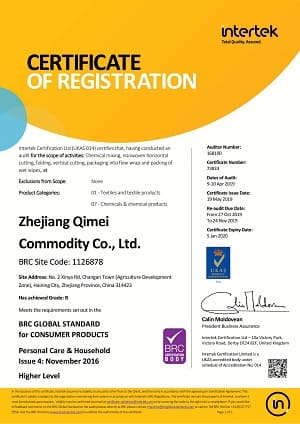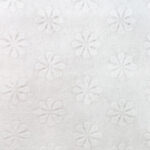Spunlace-Vliesstofftyp: Polyester, Poly-Viskose-Mischmaterial, Bambusfaser, Holzzellstoff (spülbar), Baumwolle oder Sojafaser (biologisch abbaubar)
Flach oder strukturiert (Ihr eigenes LOGO ist verfügbar)
Grammatur: 30–80 g/m²
1/10/30/80/100/120/160 Stück/Packung
The most common size of Waterproof makeup wipes around from 6 to 8 inches (15 to 20 cm) in width and length. This size is convenient for single-use and provides enough surface area to clean and freshen the external genital area. However, some intimate wipes may be smaller or larger than this standard size to cater to specific preferences or needs of consumers.
1. Wiederverschließbarer Plastikbeutel: Dies ist die häufigste Art der Verpackung von Feuchttüchern. Es besteht aus Kunststoff und hat oben einen wiederverschließbaren Streifen, um die Tücher frisch und feucht zu halten.
2. Flip-Top-Deckelbehälter: Diese Verpackungsart besteht aus einem Kunststoffbehälter mit einem Flip-Top-Deckel, der geöffnet und geschlossen werden kann, um an die Tücher zu gelangen.
3. Softpack mit Flip-Top-Deckel aus Kunststoff: Ähnlich wie der Flip-Top-Deckelbehälter wird diese Verpackung in einem Softpack geliefert und hat einen Flip-Top-Deckel aus Kunststoff für einfachen Zugriff.
4. Pop-up-Spender: Diese Verpackungsart verfügt über einen Pop-up-Spendermechanismus, der jeweils ein Tuch herauszieht.
5. Reisepaket: Eine kleine Verpackung für unterwegs, oft mit einem Schnappverschluss aus Kunststoff.
6. Einwegverpackung: Diese Feuchttücher werden in kleinen, versiegelten Päckchen geliefert, die praktisch für Reisen oder Outdoor-Aktivitäten sind.
7. Nachfüllbeutel: Diese größere Verpackung dient zum Nachfüllen anderer Feuchttuchbehälter und hat normalerweise eine wiederverschließbare Öffnung.
Water: Water is typically the main ingredient in makeup wipes, as it provides the base for the solution that is used to clean the skin.
Surfactants: Surfactants are used to break down and dissolve makeup, allowing it to be wiped away. Common surfactants used in makeup wipes include cocamidopropyl betaine, decyl glucoside, and polysorbate 20.
Emollients: Emollients are used to moisturize and soothe the skin, preventing it from drying out. Common emollients used in makeup wipes include glycerin, aloe vera, and panthenol.
Preservatives: Preservatives may be added to makeup wipes to prevent bacterial growth and prolong the shelf life of the product. Common preservatives used in cosmetic products include phenoxyethanol, methylparaben, and propylparaben.
Fragrance: Fragrance may be added to makeup wipes to give them a pleasant scent. However, some people may be sensitive to fragrances and may prefer fragrance-free products.
Other ingredients: Other ingredients that may be included in the formulation of makeup wipes include antioxidants, anti-irritants, and skin-conditioning agents.
Good Manufacturing Practices (GMP): GMP is a set of guidelines and standards that ensure the quality and safety of products. It covers all aspects of the manufacturing process, including the facilities, equipment, personnel, and documentation. Manufacturers of makeup wipes may need to adhere to GMP standards to ensure that their products are safe and effective.
ISO 22716: ISO 22716 is a standard for the production, control, storage, and shipment of cosmetic products. This standard covers all aspects of the manufacturing process, including personnel, facilities, and documentation. Compliance with this standard can help ensure that the manufacturer is producing safe and high-quality products.
FDA Regulations: If the manufacturer is selling their products in the United States, they will need to comply with the regulations set forth by the U.S. Food and Drug Administration (FDA). The FDA regulates cosmetics under the Federal Food, Drug, and Cosmetic Act (FD&C Act) and requires manufacturers to ensure the safety of their products through proper testing and labeling.
Cruelty-Free Certification: Some consumers may prefer to purchase makeup wipes that have not been tested on animals. A manufacturer may choose to obtain a cruelty-free certification from a third-party organization to demonstrate that their products are not tested on animals.
Vegan Certification: Similarly, some consumers may prefer to purchase makeup wipes that are free from animal-derived ingredients. A manufacturer may choose to obtain a vegan certification to demonstrate that their products are free from animal products.












